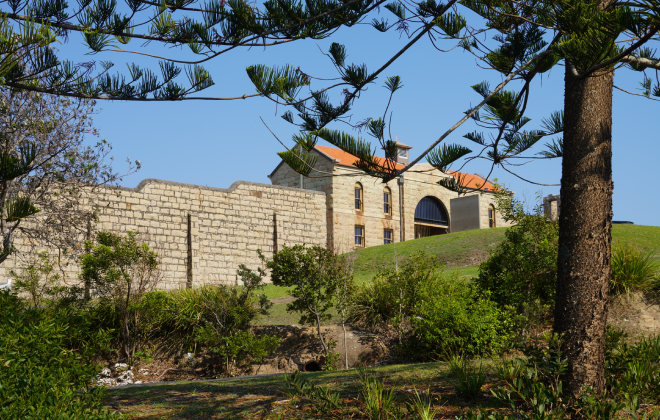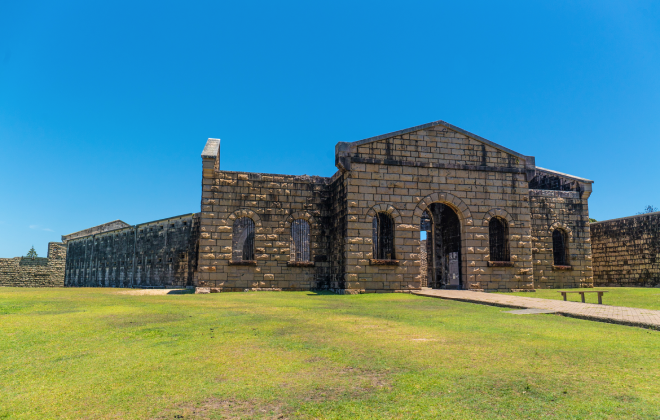Tour destinations
Responsible tourism


Step back in time with a guided tour of historic Trial Bay Gaol in Arakoon, NSW. Trial Bay Gaol may have a grim past, but it sits in a stunning seaside location in the scenic Arakoon National Park with its many walking tracks. Explore the gaol’s ruins and discover its WWI internment history.
The gaol took 13 years to build and opened in 1886. During World War I, Trial Bay Gaol became an internment camp for people of German descent who were feared to be supporters of the enemy. Trial Bay Gaol tours with local guides are the best way to learn the history of the gaol.

Take the first step toward your next adventure—explore our tours or get a free brochure sent to your inbox.
Trial Bay Gaol is perched on a scenic headland overlooking the Pacific Ocean. It has to be one of the most fascinating and picturesque heritage sites on this rugged stretch of the NSW coast. The gaol has a rich and unique history that sets it apart from other Australian prisons.
The original purpose of Trial Bay Gaol was to house prisoners who were building a breakwater to create a safe harbour between Sydney and Brisbane. There are remains of the breakwater visible from the guard tower lookout. It was intended as a model facility focused on rehabilitation through hard work and was innovative for its time.
However, the breakwater project proved costly and was eventually abandoned, and by 1903, the gaol closed. It reopened during World War I as an internment camp for Germans and Austrian nationals. This time, those detained had a vastly different experience from the gaol’s former inmates.


Whether you're a history buff, nature lover, or just looking for a memorable stop along the NSW coast, Trial Bay Gaol combines Australia’s colonial and wartime history with amazing coastal views.
Many of the Germans and Austrians who were detained at Trial Bay Gaol during World War 1 were professionals and intellectuals living in Australia. Within the prison walls, they established a cultured, artistic community. When the war ended, the gaol was abandoned and partially dismantled. The haunting stone ruins that remain are now a protected heritage site managed by NSW National Parks.
Today, visitors can explore the gaol’s cell blocks, wander through the watchtowers, and catch panoramic views from the sentry lookout with self-guided and guided tours that bring the gaol's stories to life.
Many visitors choose to stay a little longer at Trial Bay and head off on one of the many walking trails throughout the beautiful Arakoon National Park.
The Trial Bay history of its name is interesting. In September of 1816, a brig named the Trial was taken over by a group of convicts while docked in Port Jackson, now Sydney Harbour.
The brig was headed for Van Diemen's Land (now Tasmania) but was stolen by the convicts and eventually wrecked in the bay. Trial Bay was named in honour of the ill-fated vessel.
Trial Bay Gaol is located at 73 Trial Bay Gaol Access Rd, Arakoon, in Arakoon National Park, near Southwest Rocks.
Trial Bay Gaol is open daily from 9:00 am to 4:30 pm and closed on Christmas Day.
You can explore the ruins on a self-guided tour, which takes about an hour. There are other guided ‘themed’ tours that vary in length.
Our team is always happy to help if you have any questions about us or our tours. Fill out our form and we will get back to you soon.